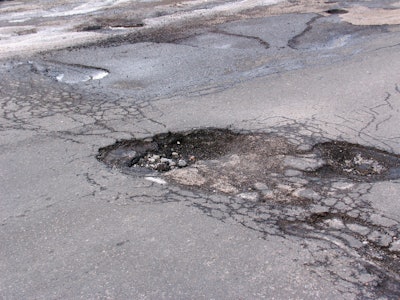
The extra vehicle operating costs are due to accelerated vehicle depreciation, additional repair costs, and increased fuel consumption and tire wear as a result of driving on deteriorated roads. Unless the state and local governments can increase the level of investment in Michigan’s transportation system, the costs to drivers will continue to rise as the condition of the state’s roadways and highways deteriorates further.
According to the latest TRIP report, 38 percent of Michigan’s major locally and state maintained urban roads are in poor condition, 30 percent are in mediocre or fair condition, and the remaining 32 percent are in good condition. In two of the state’s major urban areas, Detroit and Flint, at least a half of the region’s major roads have pavements in poor condition. Thirty- two percent of the state’s major rural, locally and state-maintained pavements are in poor condition, while 27 percent are in mediocre or fair condition and the remaining 41 percent are in good condition.
Increasingly deteriorated pavement conditions in the state’s largest cities have placed a larger burden on residents in the form of higher vehicle operating costs. The chart below details the pavement conditions of major roads in each of Michigan’s largest metro areas, as well as the annual vehicle operating cost per motorist.
 A breakdown of pavement conditions of major roads in Michigan’s largest metro areas, as well as the annual vehicle operating cost per motorist.
A breakdown of pavement conditions of major roads in Michigan’s largest metro areas, as well as the annual vehicle operating cost per motorist.
Luckily it’s not too late to fix Michigan’s transportation infrastructure. The report indicated that significant investment in transportation improvements at the local, state and federal levels could enhance the efficiency of Michigan’s transportation system, improve road and bridge conditions, boost safety, and support long-term economic growth.
“Improving the condition of Michigan’s transportation infrastructure will relieve the heavy financial burden on drivers while creating jobs and leaving a lasting asset for future generations. However, without a significant transportation funding increase, costs to drivers will rise and the transportation system will deteriorate further,” said Will Wilkins, TRIP’s executive director.










